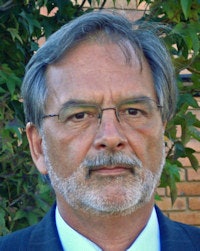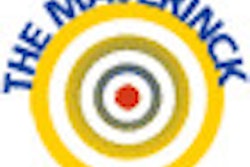
On 1 June 2009, an Air France aircraft plunged into the Atlantic en route from Rio to Paris, killing all 228 people on board, after flying through turbulence. In the final report of the accident, the analysts stated the co-pilots who were at the controls of the Air France jet at the time of the crash had not been trained to fly the aircraft in manual mode, or to promptly recognize and respond to a speed sensor malfunction at high altitude.
The investigative panel's final report, released in July 2012, said there was a "profound loss of understanding" among all three pilots about what was happening after the autopilot disconnected. The pilots then struggled to control the plane manually amid a barrage of alarms -- a situation further confused by the faulty instructions displayed by an automated navigational aid called the flight director.1
Where is the connection to radiology? There is no major accident with hundreds of dead patients and operators in radiology, but hundreds of thousands of partly or completely wrong diagnoses do occur. According to the literature, error rates range between 3% and 5% in general radiology and between 30% and 90% in mammography and detection of lung cancer.2
 Dr. Peter Rinck, PhD, is a professor of diagnostic imaging and the president of the Council of the Round Table Foundation (TRTF) and European Magnetic Resonance Forum (EMRF).
Dr. Peter Rinck, PhD, is a professor of diagnostic imaging and the president of the Council of the Round Table Foundation (TRTF) and European Magnetic Resonance Forum (EMRF).
To err is just human, even in medicine -- however, the error rate should be kept to an absolute minimum.
The question is -- and I can't answer this question -- whether the assessment of images or the final diagnostic report will suffer from a more superficial approach to dehumanized medicine in which priorities have changed from man to machine, where human beings are no longer the No. 1 priority number.
I recently stumbled across a book that has nothing to do with radiology -- or perhaps very much so. The book's title was "Alone Together: Why We Expect More from Technology and Less from Each Other."3 The author, Sherry Turkle, is a clinical psychologist and professor of social studies of science and technology in Boston. It made me curious. It is about the change in relationships between people caused by technology.
In radiology, for instance, PACS and the transmission of radiological reports by intranet or Internet have sped up communication, but they have also destroyed much of the personal contact between radiologists, their technicians and referring colleagues, and patients. There is no human being at the end of the line but rather a machine.
More so, image processing replaces the radiologist's brain and knowledge. Lateral thinking and integrating the patient's history often help more than an increased quantity of processed images. Computer-aided detection (CAD) takes away creativity and consideration. No doubt, CAD and all the connected gadgets have advantages -- as long as one remembers and knows how the concepts and the lines of thought were before they were introduced. Getting used to them makes us lazy. They should be only the "little helpers." Not understanding how they manipulate the original data is dangerous.
Radiologists too should know how to fly manually -- without letting their mental medical skills erode. Total trust in the higher efficacy and efficiency of computers might suddenly turn into a deadly illusion.
Always remember "The Sorcerer's Apprentice" -- either the poem by Goethe or Mickey Mouse in the animated movie "Fantasia" by Walt Disney: "Rid me, sir, of the spirits that I called!" The genie we let out of the bottle is on the loose now -- and what can happen in this case you see here.
References
- Clark N. Report on '09 Air France Crash Cites Conflicting Data in Cockpit. New York Times. 5 July 2012: http://www.nytimes.com/2012/07/06/world/europe/air-france-flight-447-report-cites-confusion-in-cockpit.html
- Brunese L, Reginelli A, Caranci F. Strategies to reduce errors in radiology. In: Romano L, Pinto A. Errors in Radiology. Milan: Springer; 2012: 303.
- Turkle S. Alone Together: Why We Expect More from Technology and Less from Each Other. New York: Basic Books; 2011.
Dr. Peter Rinck, PhD, is a professor of diagnostic imaging and the president of the Council of the Round Table Foundation (TRTF) and European Magnetic Resonance Forum (EMRF).
The comments and observations expressed herein do not necessarily reflect the opinions of AuntMinnieEurope.com, nor should they be construed as an endorsement or admonishment of any particular vendor, analyst, industry consultant, or consulting group.


















